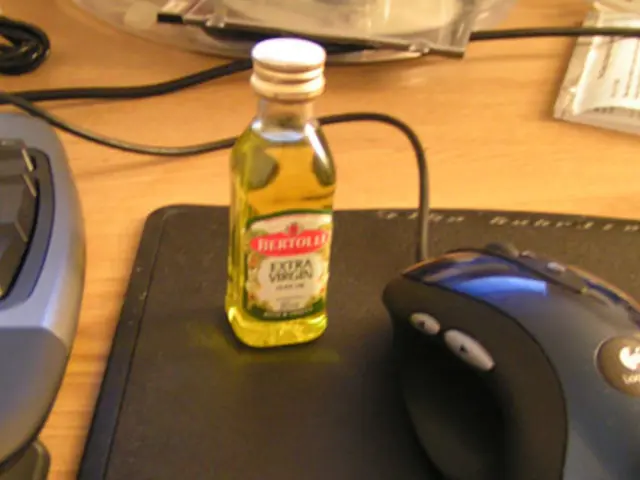Natural Solutions for diaper rash in infants: 5 Effective Methods Revealed
Revamped Text:
Get the inside scoop on dealing with diaper rash
- YouTube
Babies, despite their cozy diapers, aren't immune to the unwanted sensation of diaper rash. This common skin issue often affects infants and toddlers and can cause them discomfort.
Diaper Dermatitis 101
This inflammatory skin condition in the diaper area is known as diaper dermatitis and is the most common skin disorder among young infants. It arises due to multiple factors like moisture buildup, prolonged contact with urine or stool, and other irritants such as harsh detergents.
Signs of Diaper Rash
- Cropped skin on your baby's buttocks.
- Scaly, peeling skin.
- Soreness.
- Blisters, open sores, or pus-filled sores.
- Fussiness due to discomfort.
Causes of Diaper Rash in Babies
- Dirty Diapers: Soiled diapers are the primary culprit of diaper rash. Enzymes in poop can irritate your little one's sensitive skin, while urine releases ammonia, making these enzymes more potent and harmful to the skin.
- Friction: Tight-fitting diapers can lead to irritation, and constant friction can create rashes, especially on damp skin.
- Yeast Infections: Warm and humid environments encourage the growth of yeast and bacteria. An overgrowth of these fungi, called candida, can exacerbate normal diaper rash.
- Irritants: Babies have delicate skin that isn't accustomed to scents, soaps, and other products. The diapers and wipes you use may contribute to diaper rash, as well as the harsh detergent used for cloth diapers.
- Underlying Skin Conditions: Some infants are more prone to diaper rash, especially those with eczema or other skin conditions.
- Introducing New Foods: As babies start consuming solid foods, their stool consistency changes. Frequent bowel movements can increase the likelihood of diaper rash due to more cleansing with water or wipes, which can dry out the skin and result in diaper rash.
Preventing Diaper Rash
- Change Dirty Diapers: Frequent diaper changes help prevent diaper rash in babies. Aim to change diapers as soon as possible to minimize the contact time with stool and urine.
- Proper Cleaning: Clean your baby's diaper area gently using water or gentle, alcohol- and fragrance-free wipes. Avoid rubbing, as it can further irritate the skin. Be sure to dry the area thoroughly before putting on a fresh diaper.
- Give Diaper-Free Time: Allow your baby some diaper-free time between changes. Exposing the skin to air can help speed up the healing process.
- Change Diaper Brands or Detergent: If frequent diaper rash persists, it may be due to the diaper brand or detergent you use. Opt for different options and see if that helps keep the rashes at bay.
- Watch the Size: Ensure the diaper isn't too tight, as it can cause discomfort and potentially cause chafing around the waist or thighs. Opt for a larger size as your baby grows.
- Apply Ointments: Using barrier creams with zinc oxide and petroleum jelly can help protect the skin during every diaper change and aid in the healing process.
When to Consult a Doctor
Although diaper rash can be often managed at home, if it persists for more than a week, it's best to consult your pediatrician. Consider seeking professional help if your baby exhibits any of the following symptoms:
- The rash doesn't improve after 5-7 days of home treatment.
- Signs of bacterial infection, such as burning sensation or pain during urination or bowel movements, swelling, spreading the rash beyond the diaper area, or the appearance of pus or discharge.
- If you're unsure of the cause of the rash.
Home Remedies for Diaper Rash in Babies
Diaper rash can be painful and uncomfortable for your little one, so it's essential to provide relief as soon as possible. Here are some home remedies that can help alleviate diaper rash in babies, along with explanations of why they work and how to apply them:
- Coconut Oil: Coconut oil provides hydration due to its fatty acids and reduces inflammation with its soothing and hydrating properties. It has antimicrobial, anti-fungal, and antiviral properties, which help combat further infection. Apply a thin layer of coconut oil on your baby's bum daily or after each diaper change.
- Baking Soda: This common household ingredient has anti-pruritic effects that help relieve itching and restore the skin's pH balance, thus decreasing inflammation. Add 2 tablespoons of baking soda to a warm bath, then let your baby soak for 10 minutes. Afterward, gently wipe the area with a soft washcloth.
- Apple Cider Vinegar: With antimicrobial properties, apple cider vinegar cleanses and disinfects the rash. It has anti-inflammatory properties that help ease redness and pain. Dilute 1 tablespoon of apple cider vinegar in 1 cup of water, then use the mixture to clean your baby's bottom each time you change their diaper.
- Olive Oil: Rich in Vitamin E and Vitamin K, olive oil has regenerative effects on skin tissues and acts as a great moisturizer. It improves skin dryness due to healthy fats, oleic acids, and squalene. Mix 2 tablespoons of olive oil and 1 tablespoon of warm water, then gently apply it to your baby's bum.
- Homemade Rash Cream: A homemade rash cream can be a good alternative if you'd rather avoid store-bought options. Combine 2 tablespoons of shea butter, 2 tablespoons of coconut oil, 1 tablespoon of olive oil, and 5 drops of tea tree oil in a small bowl. Mix the ingredients until combined, then apply the cream to your baby's bum daily or after each diaper change.
- Maintaining a balanced diet rich in nutrition is crucial for a baby's brain development and overall growth and development, ensuring a healthy mind and body.
- Parenting a child involves more than just diaper care; it also includes providing appropriate nutrition for their health-and-wellness.
- As children grow older, teaching them about skin-care becomes essential to help them maintain healthy skin and avoid skin issues like diaper rash.
- The science of child development is a multidisciplinary field, encompassing not only physical development but also mental-health and overall wellness.






